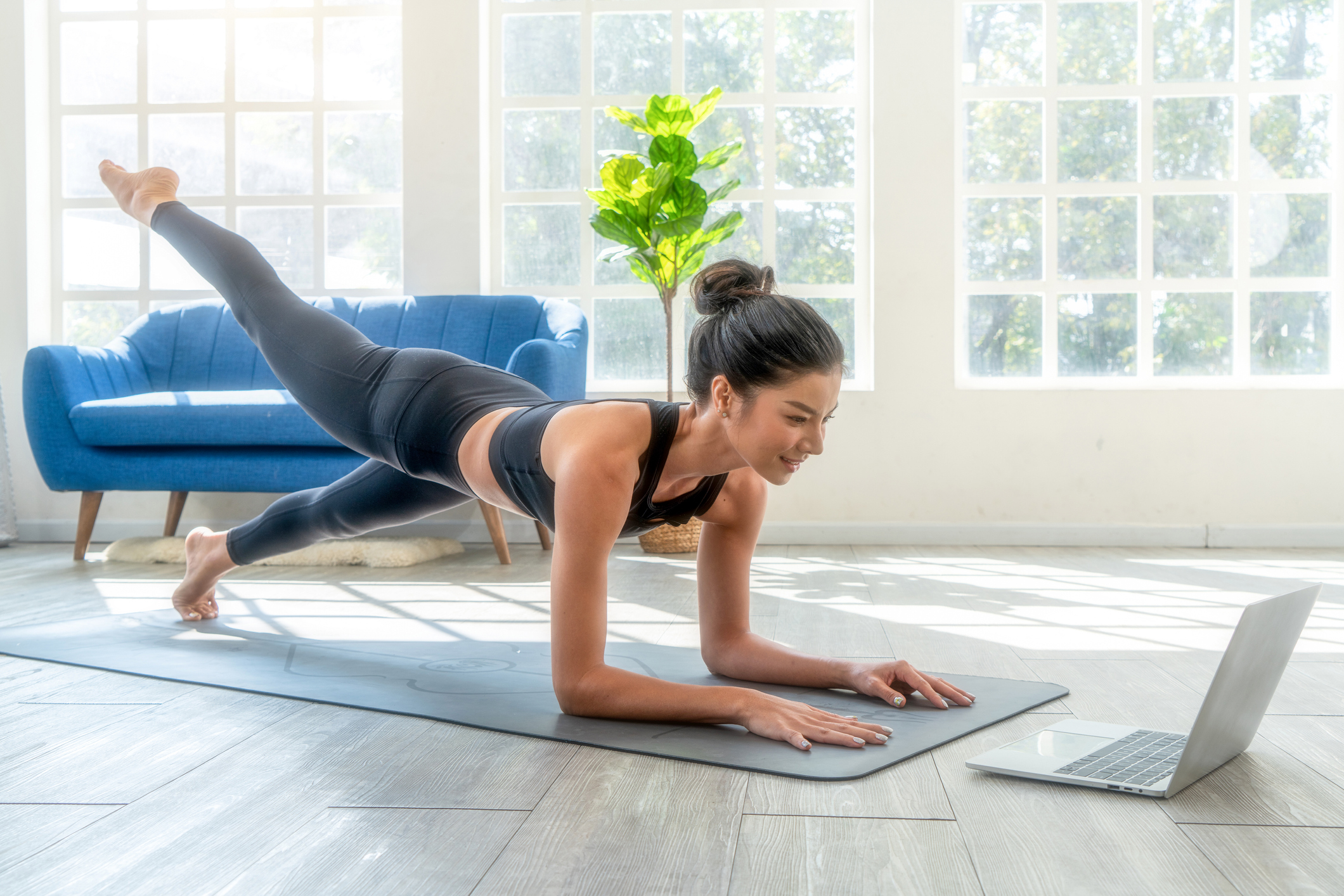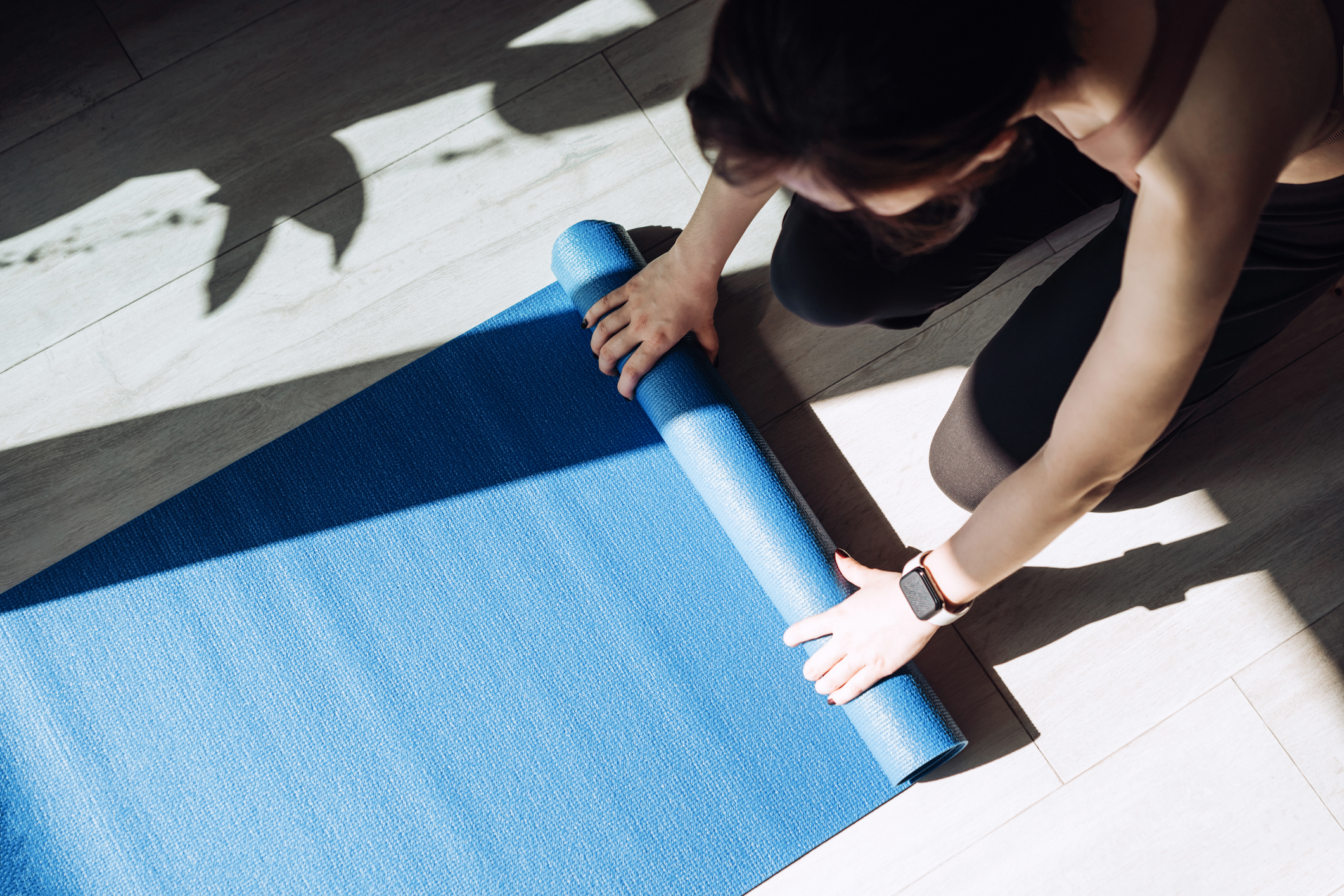
You'll know by now that, while you should never just copy someone else's workout routine (what works for you will be different to, say, your best mate), celebrity workouts can be a good place to start if you're looking for inspiration as they're both PT-designed and A list-approved. Stars like Bella Hadid and Kendall Jenner have been raving about the benefits of Pilates recently, so we thought it was time to bring you up to speed.
If you're a Pilates aficionado, you'll already know that it's a low impact workout that uses Pilates exercises to strengthen and tone your muscles while also promising to improve your posture and flexibility.
While it's often confused for yoga (read about the difference between Pilates vs yoga, here), they're not the same. You can do Reformer Pilates in a studio, but bodyweight Pilates is also hugely popular and just as effective.
So, without further ado - scroll the many benefits of Pilates, plus why, if you're after a new sweat session, we think you should give it a go.
9 benefits of Pilates (and reasons you should try it)
1. Its fun and easy to learn
Pilates and Reformer Pilates (that's the one with the machines as opposed to a mat), has grown in popularity in the UK for a number of reasons. Why? Well, as trainer Luke Meessmann of TenPilates explains, because you both feel (and see) results quickly. "This often provides great exercise motivation and keeps you coming back to class," he continues.
2. It boosts your endorphins
Sure, all workouts will likely do this, but Meessmann maintains that Pilates is a great way to boost both your physical and mental health.
"The classes are intense – it’s a full-body workout," he explains. "Not only can you feel the exercises working, but you feel great afterwards. Look forward to that endorphin buzz."
Celebrity news, beauty, fashion advice, and fascinating features, delivered straight to your inbox!

3. It's quick
Does the idea of slogging away at a workout for hours on end send a shiver down your spine? Then Pilates might be for you. You can do anything from ten minutes to an hour (but trust us when we say the hour sessions never feel like an hour).
Case in point: Pilates is a well-known celeb favourite, and stars often have to plan their days around back-to-back photo shoots, interviews, and meetings.
4. It relieves stress
Again, exercise will do that, but Meessmann reckons it's one of the better ones for calming your mind.
"It’s a great stress-buster," he emphasises. "Whether you workout first thing in the morning or after a long day at work, Pilates provides a great escape in a fun, small group environment."
5. It improves muscle tone
Celebrities consistently credit Pilates as the reason for their toned muscles, and trainers similarly maintain that the workout is good for building muscle tone.
Meessmann explains: "Pilates builds longer, leaner muscles, improves core strength, flexibility and balance. Plus, it can improve your posture, making you stand taller and avoid injury."
We're in...

6. You can do it from home
Going to the gym fills many with dread (hi, gym anxiety) while for others, they simply won't have the time.
That's where Pilates comes in - a great way to tailor your workouts from home.
Try this: the trainer shares that the ideal plan to follow will be one designed by a qualified professional. He also advises heading in-studio once every few months to make sure your technique is still sound and you are getting the most out of your training.
7. It'll improve your posture
We know we've mentioned this above, but this ones a good'un. Pilates programmes are praised by everyone from athletes to office workers for their ability to develop strength and correct posture in the key areas of your hips, lower back, upper back and neck. Some even go as far as to say it can counteract the effects of slouching.
"Most classes will focus on the most common areas people need to work on - releasing the typically overactive areas of the chest, upper shoulders, thoracic spine (upper back) and hip flexor muscles. Plus, you'll activate and strengthen the gluteals, abdominals and shoulder stabilisers," Meessmann explains.
In each class, you'll activate these muscles in isolation and then progressively work them in more compound and dynamic functional movements, enabling your body to perform these functional movements more easily day-to-day. "All of this significantly improves dynamic stability – the ability of the body to hold itself in better alignment for longer, maintaining upright posture, stability and responsiveness."

8. It's a safe pregnancy workout
Pregnancy and childbirth are times of significant change for the body, obviously, and it's important to consult with your doctor about when you should and shouldn't be working out (read our guide to whether you can workout while pregnant, here).
That said, studies have shown that Pilates could actually help you through childbirth - as Meessmann explains, the research suggests that mums-to-be who regularly exercise their core muscles can experience shorter labours and reduced lower back and pelvic pain.
Attending classes throughout pregnancy can also help you build a strong body for birth and beyond, shares the expert. 'It’s widely understood that the right kind of exercise can boost your immune system and circulation, help provide the energy levels needed throughout pregnancy, and prepare you for labour. However, as with any type of exercise, always check with your doctor first. Also remember to tell your trainer that you are pregnant before commencing class."
9. It can reduce back pain
Finally, one of the key benefits of Pilates is its ability to reduce chronic pain.
Fun fact: Pilates was initially developed as a rehabilitative tool by Joseph Pilates, a German gymnast. Born in 1883, he dedicated his life to teaching his exercising techniques, and believed poor posture = poor health.
He believed that by having an awareness of your breath (read up on breathwork training, here) and of alignment of the spine, you can strengthen the deep torso, tone abdominal muscles, lower back pain, and reduce stress.
If you're keen to try at home, our favourite Pilates teachers are Lottie Murphy and Move with Nicole - you can stream their sessions on YouTube for free.
Now, question: are you going to give the workout a go?

Ally is Marie Claire UK's Senior Health and Sustainability Editor, a well-regarded wellness expert, ten-time marathoner, and Boston Qualifying runner.
Utilising her impressive skillset and exceptional quality of writing, she pens investigative, review and first-person pieces that consistently demonstrate flair and originality.
As well as writing, Ally manages a team of freelancers, oversees all commissioning and strategy for her pillars, and spearheads the brand's annual Women in Sport covers, interviewing and shooting the likes of Mary Earps, Millie Bright, and Ilona Maher. Shortlisted for three BSMEs and winning one in 2022, Ally lives and breathes her verticals: her eye for a story and connections within the wellness sphere are unrivalled. Follow Ally on Instagram for more.
